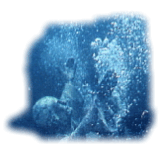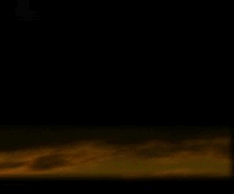|
Still limited within esoterica in the 1960s, M.K. Jessup’s “strange case” had only inferences of mystery. Each surrounded the alleged Philadelphia Experiment. Was it real? Who was Allende? Was he ever found? Why did Naval Research go to such trouble to reproduce an annotated copy of The Case for the UFO? There is a foreword to the Varo edition written by the Office of Naval Research, stating in part: “Because of the importance which we attach to the possibility of discovering clues to the nature of gravity, no possible item, however disreputable from the point of view of classical science, should be overlooked.” In his 1965 book Invisible Horizons Vincent Gaddis rendered an appropriate response: “Yet the references to gravity in the notes are vague, non-technical, and offer no illustrations or mathematical formulae from which experiment could be developed.”
Gaddis then asks: “Why were Allende’s curious letters added to the book? Was the Navy interested because they disclosed some information, possibly exaggerated, of a top secret naval experiment? And, since the Varo books were never classified, did officials believe that the puzzling comments about UFO’s and races in space would serve as a smoke-screen of doubt over references to the invisible and teleported ship?
“There is certainly something in the notes and letters that justified the time and cost of producing the Varo edition. What was it? It is far from obvious to an uninformed reader of the book.”
Gaddis’ attitude expresses the general suspicion within esoterica there was some kernel of truth. Without this nagging feeling and Jessup’s suicide there can be no legend to tempt one to believe that something very dire was discovered through the Philadelphia Experiment. Not surprisingly, Jessup’s fame has been passive, first to Riley Crabb in 1962 (M.K. Jessup and the Allende Letters) and then soon after to Gray Barker in 1963 (The Strange Case of Dr. M.K. Jessup).
J. Manson Valentine really didn’t expand the legend much in 1974. He tailored it to the Triangle and introduced it to mass readership, and this only incidentally. No one at Doubleday was expecting a book on the Bermuda Triangle to sell 5,000,000 copies. Like Jessup, Valentine was interested in explaining disappearances and the motive power of UFOs, trying to find a link between the two.
If Valentine can be viewed as the Father of the Bermuda Triangle, Jessup was most certainly the Godfather. His research was a collection of mysteries that he believed could only be explained by UFOs manipulating magnetism and gravity. His was the first thesis to go into details of how disappearances could be caused by flying saucers. Berlitz’s 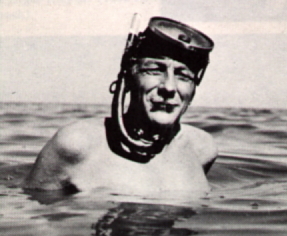 book sold so much because Berlitz could make such theories as UFO abduction, time warps, and Atlantis have a scientific basis. The tangible clue was the electromagnetic abberations reported in the Triangle and the objective fulfillment of Caycean prophecy. book sold so much because Berlitz could make such theories as UFO abduction, time warps, and Atlantis have a scientific basis. The tangible clue was the electromagnetic abberations reported in the Triangle and the objective fulfillment of Caycean prophecy.
Marine zoologist J. Manson Valentine.
One of Cayce’s trance readings in 1933 predicted evidence would be found off Bimini in the Bahamas. This is combined with another Cayce prophecy from 1940, declaring that a portion of ancient super Atlantis would rise again over 1968 to 1969. Manson Valentine discovered the Bimini Road on Labor Day 1968, and many have regarded this as a fulfillment of Cayce’s trance prophecies.
Berlitz, however, also a dabbler in the occult, scrubbed Valentine of being a true believer in the psychic world. In like manner there was no inference or link with Jessup and the occult. He was portrayed as a purely physicalist scientist. In truth, by the time of his death M.K. Jessup was as deeply immersed in and almost as committed to the occult as was Valentine. And this, most likely, was the strongest band of their friendship, growing more after Jessup moved to Florida in the late 1950s. The Case for the UFO had 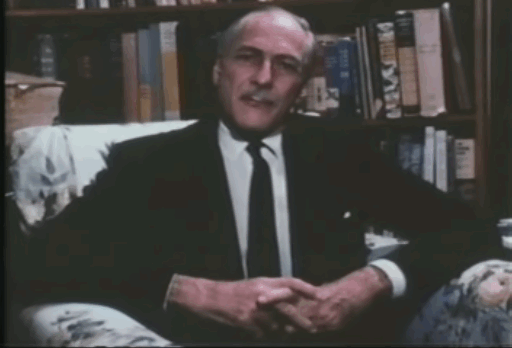 already shown influence from Cayce’s trance concepts of Atlantis, and Valentine was an ardent supporter of Cayce’s readings. already shown influence from Cayce’s trance concepts of Atlantis, and Valentine was an ardent supporter of Cayce’s readings.
Valentine, 1974, for the Richard Winer documentary The Devil’s Triangle.
Valentine also knew to omit any such references to the occult when he spoke of the Triangle. He kept it sounding as physicalist as possible. To hear him speak in 1974, a rare occasion, for local Miami legend Dick Winer’s self produced documentary The Devil’s Triangle (narrated by Vincent Price) is to hear the sanitized side of M.K. Jessup speak. Concerning the sudden disappearances in the Triangle, he says: “This is a very, very strange phenomenon. I believe it is connected with actual change in dimension due to a magnetic field; the impingement of a magnetic field on a boat or airplane; a magnetic field which could be produced by a flying spacecraft. There have been a number of such spacecraft seen approaching ships and actually disappearing under the water ”
The legend says that Jessup was coming to talk to Valentine on the night he was found dead. He had some breakthrough information he wanted to talk about with his friend. This, I think, is true enough. But the dinner appointment was made earlier in the week and it was not so much of an urgency. Now, Valentine was as equally unqualified in advanced physics as was Jessup, perhaps more so. There would be only one reason, I fear, Jessup would want to discuss the case— he needed some trance confirmation of yet another psychic source.
Valentine was always vague about the reasons, impossibly so. The desire was not deception. Valentine was a true believer, one who could go into a trance at will. But he did not believe psychic means could cause disappearances, the phenomenon he was trying to explain. Psychic means could garner information. It would have done the electromagnetic theory no service if the occult was revealed as the conduit of information in Jessup’s deeper search. The legend, of course, could feed off that vagueness.
In the days of my contact, I never broached the subject of the Philadelphia Experiment. I was in the first years of my research, having uncovered dozens of new and old disappearances. Most of my contact was through Charles Berlitz, who was impressed with my data. My last contact was indirect. It was an update from Berlitz. He wanted to pass on some of my cases to Valentine, and told me he was in ailing health now. This was in 1994.
I wish I had brought up the topic, but I hadn’t. I was still “proving” the Triangle rather than interested in proving viability of certain theories. When people seem impressed that I am not just a living example of contact with a player in the legend, but basically a successor to this player as the Bermuda Triangle’s authority, I must caution them. With reservation, I say I am a living example of contact with a player in the Philadelphia Experiment legend.
I’m really not sure how much J. Manson Valentine knew of the whole affair. He was certainly friends with Jessup and highly respected him. As his successor, I feel the need to be gracious in my appraisal. For the erudite in the 1950s it was acceptable to be into séances and explore any occult potential. This group was little different than those portrayed in old Charlie Chan movies of the 1930s or in such Val Lewten classics likes Cat People. Counterculture brought democracy to the pursuit and “New Age,” but the old guard retained its sophistication. Valentine was one of them. He wasn’t full of bunkum. He was a true believer in what he promoted. In his day, he was the local go-to for information on the Bermuda Triangle. However, like Jessup he accepted some stories but wasn’t as critical of them as he should have been.
I turn to Valentine’s ground breaking interview with Charles Berlitz. “Did Dr. Jessup think there was a connection,” asked Berlitz, “between the UFOs and the Bermuda Triangle?”
“He had a theory that the power of magnetic fields could transform and transport matter from one dimension to another . . .That UFOs could come into our dimension and get out again taking human or other samples with them. He further thought that some of the accidents were caused by the UFO’s cathode rays creating a vacuum which disintegrated planes when they entered this field. . . .The UFOs, whatever they are, seem to create a temporary magnetic vortex, an ionization pattern that can cause ships and planes to disintegrate or disappear.”
This could largely be gleaned from Jessup’s book. What Valentine gives us in advance of Jessup’s public ruminations is: “Jessup, before he died, believed he was on the verge of discovering the scientific basis for whatever was happening, which he considered explainable according to Einstein’s ‘unified field theory.’ . . . Jessup told me that he thought that the U.S. Navy had inadvertently stumbled on this in a wartime experiment carried out on a destroyer which has been called the Philadelphia Experiment.”
Thus we are given the picture that M.K. Jessup did believe it was true, but we are not given the means via which he came to this conviction. That this was not from hardcore boots-on-the-ground investigation is implied in another answer. Berlitz asks: “Did Jessup witness these incidents?” Valentine replied: “I don’t know how much he personally witnessed of the things he told me, but he researched it pretty thoroughly.” Obviously, they certainly hadn’t carried on in-depth discussions if Valentine could respond like that.
It is concerning Jessup’s death that Valentine truly adds to the legend.
Berlitz asks: Why did Jessup kill himself?
“If [italics Berlitz’s] he committed suicide, it was probably due to extreme depression. He had been approached by the Navy to continue working on the Philadelphia Experiment or similar projects but had declined— he was worried about its dangerous ramifications. He was also despondent over the criticism directed against his books by the scientific and academic world.”
You said, “If he committed suicide.” Is there reason to believe that he was killed?
“There were some comments— some people have thought so— perhaps he could have been saved. He was still alive when he was found . . . . perhaps he was allowed to die. His theories were very advanced and perhaps there were people or influences that wished to prevent their spread. It is curious that Jessup’s own edition of the annotated navy book as well as a copy he had given to Briant Reeves [another writer on UFOs] disappeared from the mail when they were sent to other people.”
Those are two very disturbing replies. Jessup hadn’t been in an academic post for close to 20 years. He maintained contacts and used his university background to try and fund expeditions, but he hadn’t been a practicing astronomer for decades. Jessup’s theories and books were so ignored that there should have been little worry his ideas would spread. As for having been approached by the Navy to engage in other experiments, Jessup would have jumped at them. He was not a great businessman and his export business based on his Brazilian contacts was not doing well. Jessup was, also, incredibly unqualified. He may have been ask to share any discoveries he made in tracing Allende or the claims of gravity, but an actual job at ONR? No.
Valentine may be masking the foe he suspected or feared— revenge or US intelligence. With all of his traveling and academic background, Jessup was likely a CIA contact. This is not an agent or contractor. But a Contact is someone the CIA briefs and they debrief the CIA upon their return from travels. Jessup had admitted to seeing classified intelligence surveys, and in one instance apparently tried to use them to huckster a commercial concern to back him to his Mexican craters (to be discussed in the next page). His leap from rubber and tire manufacturing with the Murray Corp. in Detroit during WW II to Washington DC to facilitate international export contacts is quite a curious leap.
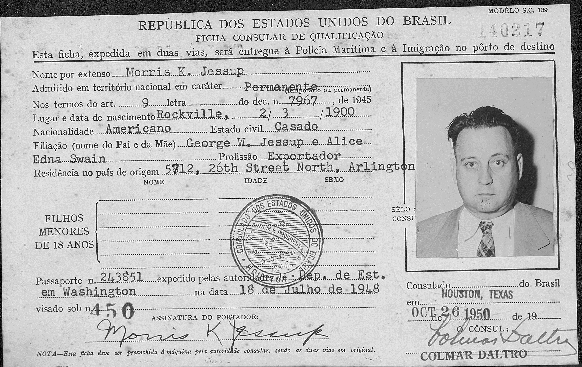
Jessup’s Brazilian passport. He was granted permanent residency. Stamped Houston, TX, October 1950. In similar fashion to his archeological expeditions, his business “export service” trips are somewhat murky.
In Without A Trace, Berlitz’s 1977 sequel to his 1974 bestseller, he brought up that in their previous interview Valentine had said Jessup believed the effects of the Philadelphia Experiment were inadvertent. Valentine wiggles out of his previous statement by responding: “I do not think that Dr. Jessup considered this an ‘inadvertent’ discovery.” To justify this amendment, Valentine calls our attention to the fact that experiments into high intensity electromagnetism have been officially discouraged “just as the ion motors, known as far back as 1918.” Implicitly he cannot believe that those involved in controlling the Philadelphia Experiment could have been ignorant of dangerous side effects. “I therefore am convinced that top ranking physicists must have some knowledge— and understandable dread— of phenomena that might be expected to emerge from a generation of a high intensity magnetic field, especially a pulsating or vortexual one.”
Well, that is as far as we need go here. The extent to which both relied on psychics for their sources blurs any ability to uncover the basis for their convictions. Jessup had certainly talked to Valentine of his encounter with ONR, theory as pertains to the Bermuda Triangle, and Valentine perhaps suspected Jessup had a double life. The most important thing Valentine provides for us is that he refers to Jessup as “Dr. Jessup.” He was eager to promote Jessup as a standing scientist instead of an adventurer/failing “executive of export service.”
It is a mistake and it is one that Gray Barker also perpetuated in his 1963 Saucerian Press booklet The Strange Case of Dr. M.K. Jessup. Barker laments he did not know Jessup better than as an extended acquaintance through letters and limited meetings. Valentine’s friendship was perhaps a bit more than this, but maybe not. The point of commonality between them capable of the most development was, once again, occult pursuits, especially about Atlantis.
Morris Jessup was a very personable man, and with a like-minded saucer believer could sometimes be indiscreet. A case in point are his letters to Barker, which Barker reproduced. Some rather astounding theories are bounced around, almost offhand, that the reader today can’t really be sure how much thought went into them or how long the views were held. For example: “I used to drive through Clarksburg [Barker’s hometown] fairly often,” Jessup writes, “visiting relatives in Indiana, but haven’t been there almost two years now. If I get out that way I’ll drop in and see you. Meanwhile, if you are over this way, drop in. I always have time to talk about saucer problems.” In another letter he felt Barker had done a good job with his article on Albert Bender, who claimed “Men in Black” had abducted him and, he believed, taken him to a base in a moon crater. Amazingly, Jessup writes: “Looks like SOMETHING did happen. He probably did stumble upon the truth. I will be glad of any additional information you may uncover.”
Explaining his reason for publishing extracts from their letters, Barker writes it was “mainly to demonstrate something of the personality of the author.” He continues: “He was a most cordial person, and greatly enthusiastic about finding the solution to the UFO mystery -- though he indicated that in his professional writings he felt it necessary to take a more conservative approach.”
Free of such conservatism behind-the-scenes, the ideas he bounced off Valentine may have been as spontaneous as his analysis of Bender based on Barker’s absurd conspiracy machinations and psychic contactee sources.
It is with Charles Berlitz and William L. Moore that unnecessary conspiracies and intrigue embed into the picture with their book The Philadelphia Experiment (1979). Carlos Allende is a bag man of a real event as he described it in his letters to Jessup.
Surprisingly, Berlitz actually took issue with Valentine’s air of mystery concerning Jessup’s death. Berlitz and Moore admit that Jessup’s letter to his friend Long John Nebel was a “straight suicide note.” Nebel was a late night talk show host on New York’s WOR radio, and Jessup confessed to him he was a “complete vegetable.” After he was dead, he asked Nebel to try and contact him on the air 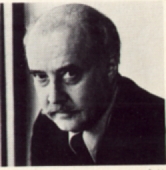 in a séance to see if it was possible to contact the dead. Nebel was a strange character as well. He believed his wife Candy Jones was a programmed courier for the CIA with an hypnotically implanted alter ego of Arlene Grant. in a séance to see if it was possible to contact the dead. Nebel was a strange character as well. He believed his wife Candy Jones was a programmed courier for the CIA with an hypnotically implanted alter ego of Arlene Grant.
Charles Berlitz became a prolific writer on phenomena subjects. An accomplished linguist, his writings on occult topics were obscure until The Bermuda Triangle in 1974, based largely on Valentine’s perspective which mirrored Jessup’s theories.
One of the most significant pre-legend references to the PE and Jessup comes from another “player,’’ Ivan T. Sanderson, a familiar person in the pseudo science world.
Sanderson was not given to complimenting anybody’s theories much except his own, so Valentine’s image of Jessup was something out of character for Sanderson. He preferred to paint Jessup as confused about it, but lucid enough to carefully entrust any potentially shocking material into his hand.
In September 1968, in issue No. 4 of his society’s journal, Pursuit, he wrote of his last meeting with Jessup in late 1958, and of the grave nature Jessup placed on it. Sanderson recalled: “On a certain day . . .Morris Jessup was a guest in my home in New York. There were about a dozen people present, off and on, before, during, and after dinner. At one point Morris asked three of us if we could have a chat in my private office. To this we repaired; and he then handed us the original *re-annotated copy, and asked us in great sincerity to read it, then lock it up in safekeeping ‘in case anything should happen to me.’ ” (*Jessup had made annotations on his Navy copy, his take on what the annotators Mr A., Mr B., and Jemi were talking about.)
According to Sanderson, Jessup then told him he was afraid he was going insane; he “was swept into a world of unreality” and he didn’t know what might become of him. He 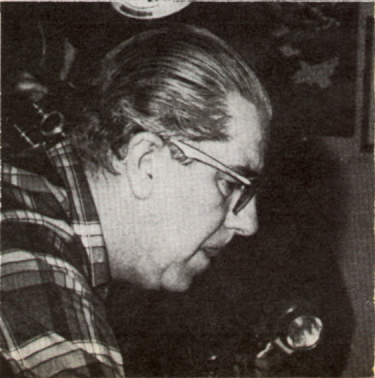 requested that none of what was in his re-annotation was to be published except by certain people, and they could only do so if there were accompanying legal affidavits. requested that none of what was in his re-annotation was to be published except by certain people, and they could only do so if there were accompanying legal affidavits.
Amidst the flashbulbs, Sanderson is giving a closer examination to something.
Sanderson was a famous popular zoologist who established SITU— Society for the Investigation of the Unexplained— an amateur group devoted to investigating mysterious phenomena around the world. His “closer examination” of subjects like Bigfoot, UFOs, and electromagnetic phenomena are some of the most unreliable, even to those who study them.
As time went by, Sanderson said he was “repeatedly asked” to reveal who that person was to whom Jessup entrusted the re-annotation. Each time he demurred, saying he was honoring his last word to his friend. Sanderson died in 1973, never revealing anything. Developing the legend in The Philadelphia Experiment, Berlitz and Moore write that no one ever discovered which of the three was given the copy to permanently hold. They then deduce the obvious— what Sanderson had intended any reader to deduce: that it had been Sanderson himself. Sanderson’s ambiguity clearly implies this since 3 men cannot read and lock up only one original.
This is all quite weird, to say the least. In his 1967 book Uninvited Visitors, Sanderson only briefly made reference to Jessup, and this was a harsh overview of his contribution to UFOlogy. “Jessup delved into history and prehistory, archeology and anthropology (of which he unfortunately knew practically nothing), and myth, legend, and folklore. Having some scientific training, he avoided most of the pitfalls in his own field, but he sank into the deepest sloughs of absurdity in others.”
Sanderson’s brusque treatment of Jessup gives no indication there was any personal friendship. Indeed, Sanderson didn’t know his correct first name; he called him Maurice instead of Morris. Now, Sanderson was an Englishman, and the English do pronounce Maurice as Morris (one of their many villainies of the French language). His ghastly mistake, however, is enlightening. It indicates he had only heard Jessup’s name but had never seen it written down, nor ever exchanged letters or cards with him. (Jessup’s moniker on his books was M.K. Jessup).
Sanderson had met Jessup, perhaps more than once, for it is when he speaks of the Allende letters in his 1967 book that he uses the only indication of familiarity, saying “he told me” he was “completely mystified” by the whole affair. This state of mind is reliable, corroborated by other sources like Nebel.
But is anything else reliable about Sanderson’s account? It seems hard to believe. As hard to believe as that Jessup would leave any such copy with an acquaintance.
Unbeknownst to Sanderson, in his 1965 book Invisible Horizons Vincent Gaddis admitted in a footnote to the only 2 works in existence about Jessup (Riley Crabb’s and Gray Barker’s): “The writer has had access to photostatic copies of appropriate sections of Jessup’s own, annotated, copy of the Varo edition, which is unique in that it contains his counter-comments, and is the only such copy in existence.”
Now, Gaddis lived in Valley Center, California, right down the road, truly, from Vista, California, and Borderland’s headquarters, of which Crabb had assumed the helm after Meade Layne. Barker certainly didn’t have the copy. Knowing Crabb had an annotated copy, he wanted to produce an edition through his Saucerian Press. However, he wrote that Crabb discouraged him and said the annotations were only teasers and didn’t mean much. Barker pushed. Then Crabb said he had actually mailed his only copy to his new residence and it had vanished in the mail. In short, it sounds like Crabb was coming up with an excuse not to give a copy to Barker, as it would reveal he had Jessup’s re-annotated copy. (Barker later implied Crabb gave him the run around.)
Gaddis, right down the road, must have seen some pages of it. As disturbing as it is, it nevertheless seems likely that M.K. Jessup gave his re-annotated copy to Meade Layne, Crabb’s predecessor at Borderland. (Crabb wouldn’t clarify to Barker that he got it direct from Jessup, only that he had Jessup’s actual copy, though he didn’t say re-annotated to Barker.)
Barker’s interest no doubt put Crabb in a bind. In his early writings, he had said that the Navy made more of the annotations than Jessup had, who had considered Allende a crackpot. We can deduce that having seen little value in Allende’s comments, Jessup’s re-annotations were probably not very conducive to the building legend of the Philadelphia Experiment.
Operating under the guidance of Mark Probert and his 12 “Controls,” Borderland wouldn’t have the mindset to see much in scientific annotations anyway. After all, Probert was claiming contact with a contemporary of Galileo (Ramon Natalli) and other “excarnate” souls of distinction.
Before Crabb began to promote the Allende annotations as something important, he had established Jessup as having a low opinion of them. After changing tack and building their importance, Crabb could hardly release Jessup’s own re-annotated copy if doing so would have the reverse effect. Gaddis nearby had been an early and perhaps the only exception, and Meade Layne may have been responsible.
In a way, it is not so surprising Jessup would have given the copy to Layne. Jessup saw the annotations hinged on occult topics he had devoured in Fate Magazine: Atlantis, Mu, Lemuria, prehistoric global wars, ancient aliens, etc. Who else but a psychic could probe further into this? Probert and the 12 Controls was considered quite good. So what would Jessup’s re-annotations surround? Probably instructions to Probert on what to pursue.
In an earlier letter to Meade Layne, Jessup had lamented he came across a New York psychic who didn’t fully understand what he wanted about planetary distances. When he talked to her later and described in detail what he wanted, he got better results. In this same letter, Jessup wrote: “In case there is any doubt in Natalli’s mind about what I want, tell him the Bode-Titius law is the approximation generally used, but which is not complete. It is a complete law that I want, which will designate and explain the positions of the planets outward from the sun.” In his reply, Layne gave him the trance readings and “The implications of correct interpretations of physical problems by excarnate entities may add up to concepts of great import— as I know you will agree.”
That Borderland valued Jessup there is no doubt. Barker knew of a séance conducted to contact him. It was in 1959. A couple, the Weiners, had visited Borderland just as it had moved to the San Diego area. They had become acquainted with the Proberts during their trip to Washington, and now they were strengthening their ties with The Inner Circle, as the core of Borderland was called. Barker quotes Crabb: “It was while Dr. Luntz was occupying Mark’s body that Mr. Weiner popped the question: ‘Would you care to comment on the suicide of M.K. Jessup?’”
Mrs. Probert was quick to intervene and caution there should be no invasion of privacy over a matter like this and “Professor Luntz, of course, agreed.” Possessing Mr. Probert, Luntz did clarify that Jessup’s “act of desperation” was the “logical extension of all consuming drive for more knowledge.” Crabb writes: “I took no notes at the séance but if memory serves me correctly Professor Luntz quoted Jessup’s farewell statement as something like this: ‘I go to prove for myself the reality of worlds beyond time and space.’”
They were going to prepare for a full séance much later when they thought Jessup was ready to instill knowledge to them of the afterlife. Unfortunately, Meade got ill soon after and Crabb took over. There was some disagreement between he and the Proberts and they left Borderland.
Jessup had expressed friendship with Layne in a letter (a copy of which Barker had) and had even requested information from Ramon Natalli (through Probert) on the origins of the solar system and anything that could advance them beyond Bode’s law. So once again, it seems likely Layne is the one to whom Morris Jessup had given his re-annotated copy and it passed somehow to Crabb, who tried to (eventually) make more of a tangible conspiracy out of it all.
Like Valentine and Berlitz would do later, perhaps Crabb saw it was necessary to sanitized Jessup for the sake of the mainstream, as they would not understand his research methods. Therefore the re-annotation had remain behind locked doors. . .or Probert took it with him when he left Borderland. (Remember, Gaddis saw photostatic copies, only extracts, not originals.)
There is no question that Jessup was really going that far over the edge into the psychic. It would also explain why the re-annotation has never surfaced. Jessup’s dependence on psychics would turn off the vast majority of UFO buffs and conspiracy enthusiasts. Like with Sanderson, the mysterious re-annotation came to be referred to as something that should never be seen. In actuality, it is probably of little value and Jessup’s annotations are probably negative or information for Probert or some psychic Control.
We have come back to Sanderson, 1968, who clearly wasn’t too informed about Gaddis’ earlier writings. From deriding Jessup, he put a much darker slant on things. It isn’t hard to imagine what made him change his tune in only a year. In that 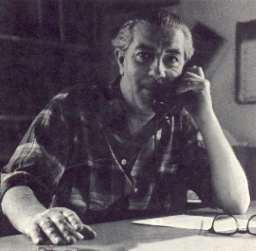 interim the obscure PE story was the subject of a sensational bit by Brad Steiger. interim the obscure PE story was the subject of a sensational bit by Brad Steiger.
Sanderson— ready to consult, ready for incoming information, smoking away, ruminating over the mysteries of our age. This picture was carefully posed for his book, Uninvited Visitors, in which he proposed UFOs were biological life. He laboriously recommended UFOs should be called other acronyms like UAO and UAP: Unidentified Aerial Objects and Unidentified Atmospheric Phenomena. His quick change on Jessup was not unique. The book above did not sell well. Only 3 years later he changed tune to proposed alien bases beneath the sea. Given the outlandish scientific sounding title Invisible Residents: a disquisition upon certain matters maritime and the possibility of intelligent life under the waters of this earth it sold better.
The most damning thing about the “players” is not what they knew but who they did not know. Carlos Allende, for example.
Dr. Jacques Vallée, noted UFOlogist and astrophysicist, in his book Revelations (Parapsychology, 1991) touched on his encounters with Carlos Allende. When the paperback version of his book Anatomy of a Phenomenon came out in 1967 he too received letters from him. The letters were characterized by the same bizarre style of writing. Allende was mostly interested in pitching deals, trying to sell him all his works and research on UFOs, the Philadelphia Experiment and other subjects. For an opening price of 6,000 dollars, he offered Vallée the annotated “long suppressed” copy of Jessup’s book. He finally dropped it to 1,950. No takers. For $750 Vallée could buy “How to build your own flying saucer” written by Allende himself. No takers.
By far Vallée’s correspondence was longer than Jessup’s had ever been; Vallée even mentions a 15 page letter from Allende. No great legend ever came of it, for Vallée wasn’t taken in by Allende. On the contrary, he felt he was dealing with a “con man.”
To read Sanderson, Berlitz, Moore, to a lesser extent Valentine, is to read men who placed Jessup at the center of something they thought could be promoted as truly earth 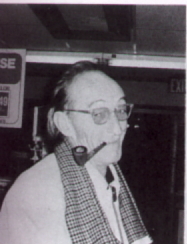 shattering. This was based on their cursory knowledge of Allende’s 2 letters to Jessup. Sanderson didn’t even attach enough importance to the source, Allende, to mention his name. He was only consumed with his interpretation of it all. shattering. This was based on their cursory knowledge of Allende’s 2 letters to Jessup. Sanderson didn’t even attach enough importance to the source, Allende, to mention his name. He was only consumed with his interpretation of it all.
Playing it to the hilt: a 1983 picture of Allende at the Dallas airport. He told the photographer her life was in danger for having seen and photographed him. “In two years you’ll be as dead as a doornail.” Apparently even knowing the location of the man who knew too much might be fatal.
There are those who have a special gift; they know how to play to believers in a narration that has a false example. I think Allende was one of them. From the get-go he was way ahead of the pseudo-science world. He’s made a mockery of them all, proving even his fabricated ramblings are coherent to them.
Knowing Jessup’s belief that the Inca buildings were thrown up by levitation, Allende added the teleportation angle of the Philadelphia Experiment to exploit his appetite for the ludicrous. Jessup was hooked, and tried to figure it all out, even reaching out to the supernatural for help.
Sanderson thought that the knowledge revealed by Mr. A, Mr. B, and “Jemi” took several years of research to even acquire. Where did they get it all? “After many years of just such ‘research’ I feel this ‘bit’ is more worthy of further investigation than any other that I have come across.” Thus ends Sanderson’s Uninvited Visitors and his last bit of credibility. Carlos Allende turned out to be the three annotators of Jessup’s book. He merely addressed himself in three different aliases and talked back and forth to himself. What Allende invented in fan mail, Sanderson took years to equal in ‘research.’
The bit he thought worthy of more research was probably Allende’s annotations that aliens came from under the oceans, for that would be the thesis of Sanderson’s next book Invisible Residents: a disquisition upon certain matters maritime and the possibility of intelligent life under the waters of this earth. Allende’s theory was brisk by comparison.
Ought to, the Sea is Natural home of the
Little bastards
Sanderson also thought that Jessup’s behavior over the Allende annotations in that secretive meeting that night was all very dramatic “. . .but, after we had read the material, we must admit to having developed a collective feeling of a most unpleasant nature.”
One can burst out laughing when remembering that while Sanderson was writing this drivel, Allende was trying to peddle “how-to” books on building your own UFO. How ephemeral they all were to everything Allende had been up to, and how impressed they were with their own little slice of their own convoluted narrative.
Equally, at the same time the heavy atmosphere clutched Sanderson’s typewriter while recalling Jessup’s foreboding manner, Allende was making sport of Jessup in a letter to Dr. Jacques Vallée. Concerning Jessup’s belief that UFOs came from between the Earth and Moon, Vallée had invited Allende to explain. Vallée thought the answer funny and so do I.
“Proff. Morris K. Jessup spoke an East Coast dialect of English as do, also, I myself. ‘The MOON’ in the general East Coast dialect means ‘ANYWHERE,’ ‘NOWHERE’ and ‘The NEUTRAL’ is pretty well ‘IN THE MIDDLE’ . . . So in translation it very strongly seems that Proff. Jessup was attempting a sly bit of a joke because the translation comes out– UFOs come from ‘the MIDDLE OF NOWHERE’ . . .in short our quixotic and highly inventive and imaginative proffessor . . .is saying (it seems) ‘I DON’T KNOW FROM WHENCE COME THE UFO’s.’”
When a person like Allende can see through this crowd, we best all take note.
This is a brutal ending, but I don’t want to come off as scoffing, which I truly am not. Sometimes it is possible the narrative can be right but the example wrong. Those who promoted themselves may deserve some gefawing, but denuded of the legend there is still that kernel. Jessup and the Navy thought there was a reason to preserve the annotated book. They didn’t care much for Allende. Nor did either need him. Yet there was something.
Next.
|

